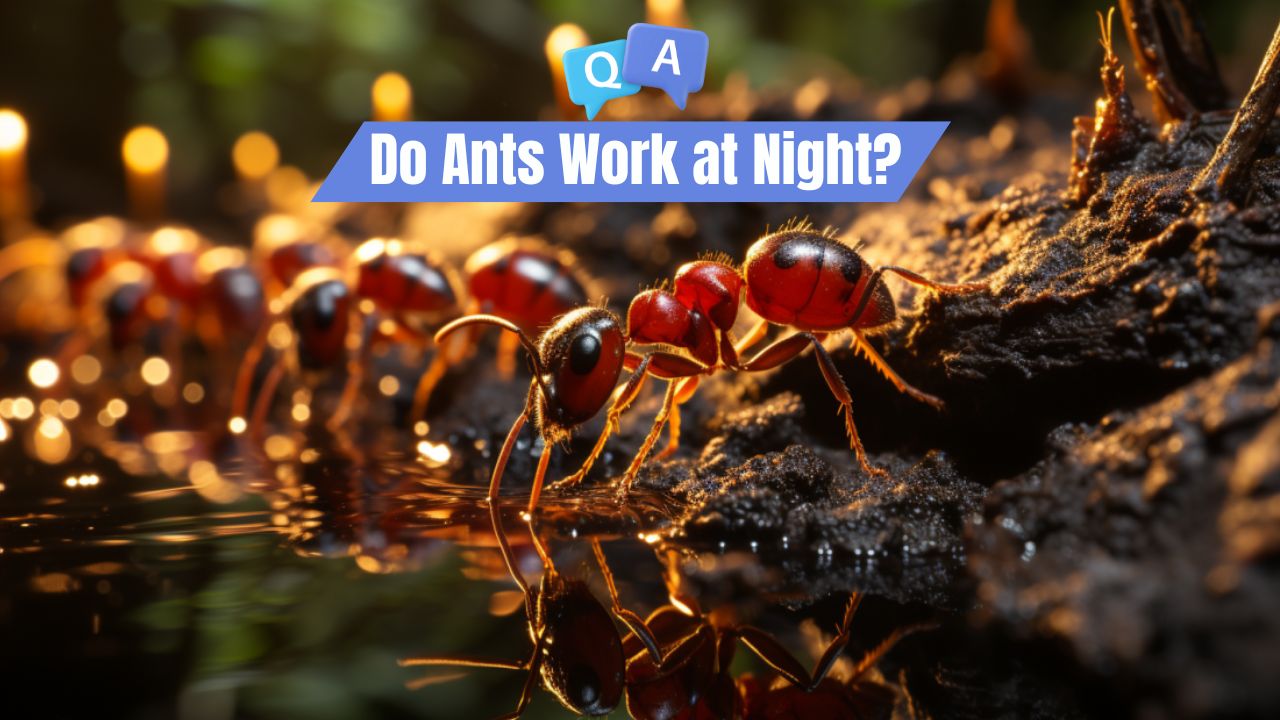Introduction: The Nighttime World of Ants
The question “do ants work at night?” opens a door to a hidden world, one that thrives under the cover of darkness. Ants, those tiny marvels that scurry beneath our feet, are creatures of immense complexity and adaptability. Their nighttime activities are a symphony of survival, communication, and evolution. In this exploration, we will journey into the night to uncover the secrets of ants and their nocturnal behaviors.
The Importance of Understanding Ant Behavior
Understanding the nighttime activities of ants is not merely a matter of curiosity. It provides insights into their ecology, social structures, and survival strategies. It also helps us appreciate the delicate balance of nature and the role ants play in various ecosystems.
Desert Ants: Masters of the Night
Adapting to Extreme Conditions

In the harsh deserts, where daytime temperatures can be lethal, many ant species have evolved to become nocturnal. The Cataglyphis ants, for example, forage at night to avoid the scorching heat. Their ability to navigate using celestial cues is a remarkable feat of natural engineering.
Impact on Desert Ecology
These nocturnal desert ants play a vital role in the desert ecosystem, aiding in seed dispersal and nutrient cycling. Their nighttime activities shape the landscape and influence other desert organisms.
Rainforest Ants: A Diverse Spectrum
Army Ants: Nighttime Raiders

The Army ants of the rainforests are known for their nocturnal raids. These ants form long columns, marching through the night to hunt prey. Their coordinated attacks are a sight to behold, a testament to their social organization.
Leafcutter Ants: Moonlit Gardeners
Leafcutter ants, another fascinating species, may also be found working at night. They cut leaves and carry them back to their nests, where they cultivate fungus. This unique form of agriculture is a delicate process that often continues into the night.
Urban Ants: Adapting to Human Environments

Foraging Under Streetlights
In urban environments, some ant species have adapted to human activity and artificial lighting. They forage at night, utilizing streetlights and other artificial sources to extend their working hours.
Impact on Urban Ecology
Urban ants’ nighttime activities have implications for pest control, waste management, and urban ecology. Understanding their behavior helps in managing their populations and recognizing their ecological contributions.
Factors Influencing Nighttime Activity
Temperature and Climate

Temperature is a key factor influencing whether ants will be active at night. In hot environments, cooler nighttime temperatures favor activity, while in colder regions, ants may prefer the warmth of the day.
Predation and Safety
Nighttime offers protection from predators for some ant species. The cover of darkness allows them to forage with reduced risk, a survival strategy that has evolved over millennia.
Species-Specific Behavior and Evolution
Each ant species has unique behaviors shaped by evolution and environmental factors. Some are inherently nocturnal, while others may switch between day and night activities based on seasonal changes or other factors.
Impact of Human Activities on Nighttime Behavior
Light Pollution

Artificial lighting in urban areas can disrupt ants’ natural rhythms and behaviors. Light pollution affects their foraging patterns, navigation, and even reproduction, leading to ecological imbalances.
Habitat Destruction
Urbanization, deforestation, and other human activities impact ants’ habitats, forcing them to adapt or perish. These changes have far-reaching consequences for ecosystems and biodiversity.
Conclusion
The nighttime world of ants is a complex and fascinating realm, filled with adaptations, strategies, and ecological roles. From deserts to rainforests to urban landscapes, ants continue to amaze us with their nocturnal behaviors.
Their nighttime activities are a testament to their incredible ability to adapt and thrive, a lesson we might all learn from. Next time you find yourself under the starlit sky, take a moment to look down and marvel at the tiny adventurers embarking on their nocturnal quests. You might just discover a world of wonder, just as I have in my many years of studying these remarkable creatures.

